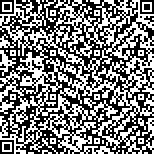本文已被:浏览 445次 下载 230次
Received:February 24, 2024 Published Online:September 20, 2024
Received:February 24, 2024 Published Online:September 20, 2024
中文摘要: 目的 基于数据挖掘方法分析近20年中药复方专利干预结直肠癌(CRC)的用药及配伍规律,为临床新药的研发提供依据。方法 检索万方数据库和中国知网建库至2024年1月17日已公布的治疗CRC的中药复方专利,运用Excel 2019软件进行药物频次、性味归经统计;利用SPSS Modeler 18.0及SPSS Statistic 27软件进行药物关联规则和聚类分析;采用Cytoscape 3.9.0软件构建核心药物共现复杂网络,并展现潜力新方新药的关联性。结果 共纳入治疗CRC的中药复方专利158项,包含中药448味,高频中药有黄芪、白花蛇舌草、茯苓、白术等,药物类别以补虚药为主,药性以寒、温居多,药味以苦、甘、辛为主,归经多属肝、脾、肺、胃经。常用药对有半枝莲、黄芪、甘草、白术、茯苓,常用角药有黄芪、白花蛇舌草。聚类药物有“白花蛇舌草、半枝莲”等4组,潜力药物有“余甘子-红芪-石榴子-川椒-榼藤子”等5组,通过拓扑属性分析筛选得到治疗CRC的核心新方。结论 中药复方专利治疗CRC以补虚药为主,多运用益气扶正、清热燥湿、化瘀解毒等治法,聚类药物以白花蛇舌草-半枝莲为主,可提供新的组方思路,为CRC的临床治疗及新药研发提供一定参考。
Abstract:Objective To analyze the medication usage and compatibility patterns of Chinese herbal medicine compound formulas in patents for intervening in colorectal cancer (CRC) over the past 20 years based on data mining, in order to provide a foundation for the development of new clinical medications. Methods Patented Chinese herbal medicine compound formulas for treating CRC were retrieved in the Wanfang database and China National Knowledge Infrastructure (CNKI) from their inception until January 17, 2024. Data analysis was performed using Excel 2019 software to assess drug frequency, properties, flavors, and meridian associations. SPSS Modeler 18.0 and SPSS Statistics 27 software suites were used for deriving drug association rules and performing cluster analysis. A complex network of core drug co-occurrences was constructed using Cytoscape 3.9.0 software to demonstrate associations of potential new formulations and new drugs. Results In total, 158 Chinese herbal medicine compound patents were included for CRC treatment, encompassing 448 Chinese herbal medicines. High-frequency medicines included Astragalus membranaceus (Huangqi), Hedyotis diffusa (Baihua Sheshecao), Poria cocos (Fuling), Atractylodes macrocephala (Baizhu), etc. The predominant type of medicine was deficiency-tonifying drugs, with the nature of the drugs being primarily cold and warm, and the flavors mostly bitter, sweet, and pungent. The meridians were chiefly associated with the liver, spleen, lung, and stomach. Herbs commonly used for pairs included Scutellariae barbatae Herba (Banzhilian), Astragalus membranaceus (Huangqi), Glycyrrhizae Radix et Rhizoma (Gancao), Atractylodes macrocephala (Baizhu), Poria cocos (Fuling), etc., while commonly used triangular medicines included Astragalus membranaceus (Huangqi) and Hedyotis diffusa (Baihua Sheshecao). There were four clusters of drugs, including Scutellaria barbata D. Don (Banzhilian)- Hedyotis diffusa (Baihua Sheshecao), and five groups of potential drugs, including “Phyllanthus emblica (Yuganzi)-Radix hedysari (Hongqi)-Semen punicae granati (Shiliuzi)-Zanthoxylum bungeanum (Chuanjiao)-Entada phaseoloides (Hetengzi)”. The core new formula for treating CRC was selected through topological attribute analysis. Conclusion Chinese herbal medicine patent formulas for treating CRC primarily use tonifying herbs, employing methods such as tonifying Qi and supporting the body, clearing heat and dampness, and resolving blood stasis and detoxification. The clustering of drugs focuses on Hedyotis diffusa (Baihua Sheshecao) and Scutellaria barbata D. Don (Banzhilian), which may offer new formulation ideas and provide reference for clinical treatment and new drug development for CRC.
keywords: Colorectal cancer Chinese herbal medicine compounds Patents Data mining Association rules Clustering analysis Medication law
文章编号: 中图分类号:R735.3 R287 文献标志码:A
基金项目:江苏省中医药管理局省中医药科技发展计划项目(MS2023015);江苏省中医院科研基金(kgr0255)
引用文本:
